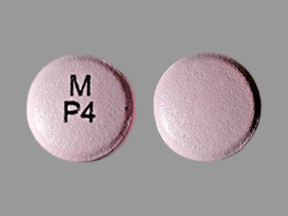PAROXETINE CONTROLLED-RELEASE - ORAL
PHONETIC PRONUNCIATION: (pa-ROX-e-teen)
COMMON BRAND NAME(S): Paxil CR
GENERIC NAME(S): paroxetine HCl
Uses
USES: Paroxetine is used to treat depression, panic attacks, anxiety disorders, and a severe form of premenstrual syndrome (premenstrual dysphoric disorder). It works by helping to restore the balance of a certain natural substance (serotonin) in the brain. Paroxetine is known as a selective serotonin reuptake inhibitor (SSRI). This medication may improve your mood, sleep, appetite, and energy level and may help restore your interest in daily living. It may decrease fear, anxiety, unwanted thoughts, and the number of panic attacks. Paroxetine may lessen premenstrual symptoms such as irritability, increased appetite, and depression.
How to use PAROXETINE CONTROLLED-RELEASE - ORAL
HOW TO USE: Read the Medication Guide and, if available, the Patient Information Leaflet provided by your pharmacist before you start taking paroxetine and each time you get a refill. If you have any questions, ask your doctor or pharmacist. Take this medication by mouth with or without food as directed by your doctor, usually once daily in the morning. Taking this medication with food may decrease nausea. If this medication makes you sleepy during the day, talk to your doctor about taking it in the evening. Do not crush or chew this medication. Doing so can release all of the drug at once, increasing the risk of side effects. Also, do not split the tablets unless they have a score line and your doctor or pharmacist tells you to do so. Swallow the whole or split tablet without crushing or chewing. The dosage is based on your medical condition, response to treatment, age, and other medications you may be taking. Be sure to tell your doctor and pharmacist about all the products you use (including prescription drugs, nonprescription drugs, and herbal products). To reduce your risk of side effects, your doctor may start you at a low dose and gradually increase your dose. Follow your doctor's instructions carefully. Do not increase your dose or use this drug more often or for longer than prescribed. Your condition will not improve any faster, and your risk of side effects will increase. Take this medication regularly to get the most benefit from it. To help you remember, take it at the same time each day. If you are taking paroxetine for premenstrual problems, your doctor may direct you to take it every day of the month or just for the 2 weeks before your period through the first full day of your period. It is important to continue taking this medication even if you feel well. Do not stop taking this medication without consulting your doctor. Some conditions may become worse when this drug is suddenly stopped. Also, you may experience symptoms such as mood swings, headache, tiredness, sleep changes, and brief feelings similar to electric shock. To prevent these symptoms while you are stopping treatment with this drug, your doctor may reduce your dose gradually. Consult your doctor or pharmacist for more details. Report any new or worsening symptoms right away. It may take up to several weeks before you get the full benefit of this drug. Tell your doctor if your condition does not improve or if it worsens.
Side Effects
Precautions
Interactions
Overdose
Images
Reviews
Faq for PAROXETINE CONTROLLED-RELEASE - ORAL
Paroxetine Controlled-Release is an oral medication that belongs to a class of drugs known as selective serotonin reuptake inhibitors (SSRIs). It is commonly prescribed to treat major depressive disorder, generalized anxiety disorder, panic disorder, and certain other mental health conditions.
Paroxetine Controlled-Release increases the levels of serotonin, a neurotransmitter in the brain, which helps regulate mood, emotions, and sleep. By increasing serotonin levels, it can improve symptoms of depression, anxiety, and other related disorders.
The recommended dosage varies depending on the individual's condition and response to treatment. It is important to follow the dosage instructions provided by your doctor. Typically, the initial dose is 12.5 mg once daily, and it can be increased gradually if needed, with a maximum recommended dose of 62.5 mg per day.
It may take several weeks for Paroxetine Controlled-Release to start showing its full effects. It is important to be patient and continue taking the medication as prescribed, even if you do not experience any immediate improvement.
Some common side effects of Paroxetine Controlled-Release include nausea, drowsiness, dizziness, sweating, dry mouth, insomnia, and sexual problems. These side effects may subside over time or with dose adjustment. However, if they persist or become bothersome, it is recommended to consult your doctor.
Abruptly stopping Paroxetine Controlled-Release may lead to withdrawal symptoms such as dizziness, headache, nausea, irritability, and flu-like symptoms. It is important to gradually reduce the dosage under the supervision of a healthcare professional to minimize the risk of withdrawal symptoms.
Paroxetine Controlled-Release may interact with certain medications such as monoamine oxidase inhibitors (MAOIs), blood thinners, nonsteroidal anti-inflammatory drugs (NSAIDs), and certain antidepressants. It is important to inform your doctor about all the medications you are taking to prevent any potential drug interactions.
Paroxetine Controlled-Release should be used with caution during pregnancy, especially during the first trimester, as it may pose a risk to the developing fetus. It is important to discuss the potential benefits and risks with your doctor. Paroxetine can also pass into breast milk, so it is advisable to consult with your healthcare provider before using it while breastfeeding.
The duration of treatment with Paroxetine Controlled-Release varies depending on the individual's condition and response to the medication. It is important to follow your doctor's advice and continue taking the medication as prescribed, even if you start feeling better, to prevent a relapse of symptoms.
Warning
WARNING: Antidepressant medications are used to treat a variety of conditions, including depression and other mental/mood disorders. These medications can help prevent suicidal thoughts/attempts and provide other important benefits. However, studies have shown that a small number of people (especially people younger than 25) who take antidepressants for any condition may experience worsening depression, other mental/mood symptoms, or suicidal thoughts/attempts. Therefore, it is very important to talk with the doctor about the risks and benefits of antidepressant medication (especially for people younger than 25), even if treatment is not for a mental/mood condition. Tell the doctor right away if you notice worsening depression/other psychiatric conditions, unusual behavior changes (including possible suicidal thoughts/attempts), or other mental/mood changes (including new/worsening anxiety, panic attacks, trouble sleeping, irritability, hostile/angry feelings, impulsive actions, severe restlessness, very rapid speech). Be especially watchful for these symptoms when a new antidepressant is started or when the dose is changed.
Disclaimer
IMPORTANT: HOW TO USE THIS INFORMATION: This is a summary and does NOT have all possible information about this product. This information does not assure that this product is safe, effective, or appropriate for you. This information is not individual medical advice and does not substitute for the advice of your health care professional. Always ask your health care professional for complete information about this product and your specific health needs.





No Reviews Yet